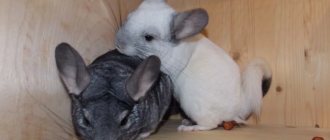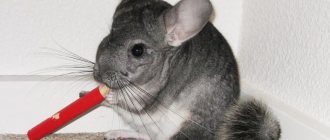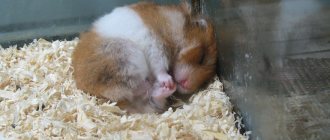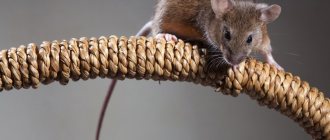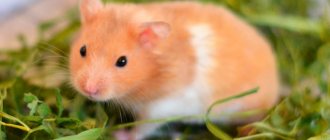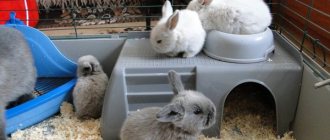If a beginner starts reading reviews from experienced chinchilla owners on the Internet, he will come across many conflicting opinions. The appearance of a chinchilla in your home can not only bring joy, but also create a lot of inconvenience. This article will help you figure out whether it is worth getting a chinchilla and will answer many questions that concern any breeder: how to care for the animal, whether the purchase will be useful for the child, what is the life expectancy of chinchillas, at what age can you take a rodent home, how to choose the right pet. It also contains a description of the animal and an interesting video with chinchillas.
Chinchilla as a pet
Description, behavior, character
Outwardly, chinchillas are very cute and attractive animals, so lovers of exotic pets buy them, not paying attention to the fact that this is a wild animal.
You can watch the chinchilla's antics for hours
Breeders are also attracted by the agility and jumping ability of nimble rodents. Although chinchillas do not like to be handled, it is a pleasure to watch them from the outside, which is why videos featuring chinchillas are very popular on the Internet. If you equip the cage with special ladders and shelves, you can create an attraction not only for your pet, but for the entire household.
You should not let the animal run around the room if the walking area is not prepared in advance.
The sneaky animal is in danger everywhere. He can easily jump onto the windowsill and get into any crack.
Chinchillas often show their character, making the owner touch. Chinchillas can demonstrate cunning, arrogance, greed and other traits. Animals are also very shy, so there is no need to impose your company on them. It is better to accustom the animal to your presence gradually.
On average, a chinchilla lives at home for 20 years. If you create good conditions for the animal, avoid hypothermia and overheating, provide proper care and a balanced diet, then its lifespan can be extended to 25 years.
Chinchilla care
Caring for a chinchilla will not take much time, but the breeder should know in advance how to care for the animal, here are a few rules:
- Update the contents of the drinking bowl daily.
- Refill the feeder 2 times a day.
- The food must be granulated. Be sure to give hay, carrots, dried apples and tree branches. It is forbidden to give sugar-containing and fresh foods.
- Ensure constant supervision by a veterinarian and carry out disease prevention. If a chinchilla gets sick, it is very difficult to cure it.
- The animal needs to have its teeth ground down; it is recommended to place a mineral stone in the cage.
- Chinchillas should not be bathed in water; a bathtub with volcanic sand must be installed in the pet’s home for bathing.
- When soiled, the litter needs to be changed; general cleaning is recommended weekly.
- It is better to place the cage with the animal away from radiators, sources of drafts and noise.
What to feed?
A properly formulated diet for a pet is the key to its health. The basis of chinchilla nutrition is special ready-made dry food, which should be purchased at pet stores. The purchased diet is ideally balanced for feeding a pet and is divided into types, depending on the age of the rodent. It contains all the necessary minerals and trace elements for growth and normal development.
It is necessary to put food in the feeder every evening before bed, when the pet's activity phase begins. The following additional components should be present in the chinchilla's diet as a treat:
- green plants : clover, yarrow, alfalfa, nettle, dandelion, apple and hazel branches;
- fruits and berries : rose hips, figs, raisins, dried apricots, beets, dried carrots, dried apples;
- hay of legumes , cereals, multi-colored and asteraceous crops.
Delicious berries
Some foods are contraindicated for chinchillas, for example, cabbage and raw potatoes. The rodent's stomach will not be able to digest meat products, cheeses and milk. You should not spoil your pet with food from the table, since such a treat will give him severe stomach pain in the future.
The following herbs are poisonous to rodents:
- horsetail;
- fern;
- buttercup;
- henbane;
- St. John's wort.
Should I get a chinchilla?
Before deciding whether to get a chinchilla as a pet, you need to not only familiarize yourself with the animal’s vital functions, but also answer a number of questions.
How will my child react?
According to reviews from experienced chinchilla breeders, a child can harm the animal. Children love to cuddle pets, stroke them, and grab them by the tail. It is not advisable to do all these manipulations with a chinchilla. In addition to the stress that the animal experiences when it is grabbed, it can suffer mechanical damage. There are cases where children accidentally broke the legs of rodents. The animal will also shed fur from the place where it was grabbed, so frequent contact between the chinchilla and the child will not benefit either the pet or the baby. After all, an animal may react inadequately to harassment and, in turn, also scare small household members.
If your child just likes to watch animals, and you are sure that he will not disturb the peace of the rodent, then the child is not an obstacle to getting a chinchilla.
Will other pets be a problem?
Stories about the friendly union of various animals may make you want to make friends with a chinchilla with a cat, dog, rodents and other pets. Experienced chinchilla owners advise not to keep them together with other pets. A cat and a dog can injure a small animal. In addition, the division of territory between our smaller brothers is inevitable. Being near rivals will provide the chinchilla with constant stress, and if pets walk outside, they can become carriers of pathogenic bacteria, which is a threat to the life of the chinchilla. If you place rodents that are smaller than it in a chinchilla’s cage, then in this case you should be afraid for the small animals.
Can I provide my pet with everything he needs?
If an exotic rodent appears in the house, the breeder will have to:
- Allocate enough space in the room - the cage of one animal should not be less than 60x70.
- Find time for weekly cleaning, daily watering and twice feeding.
- Incur the costs of regularly purchasing feed, hay, litter, paying for veterinary care, as well as purchasing the necessary equipment to house the animal and arrange its home.
- Ensure optimal temperature conditions throughout the year - 18-23⁰ (you may need to install an air conditioner and heater).
Can we get along?
Chinchillas are nocturnal animals. If the apartment has poor sound insulation or the animal is in the same room with you, then it can interfere with your sleep by making all sorts of sounds and noises. In turn, the owner can disturb the pet’s peace if he watches TV, listens to music or vacuums while the animal is resting.
You can only give a chinchilla with your consent.
Problems can be avoided if you think in advance where to install the cage so that the breeder and the rodent do not interfere with each other.
Does a chinchilla stink?
Chinchillas are very clean. The animal does not have sweat glands, so it does not emit an unpleasant odor. Animal excrement does not have a strong odor; a special filler can eliminate the natural specific aroma.
Regular cleaning of the cage and the presence of sand in the rodent's bath will save you from such problems as unpleasant odors.
Choosing a chinchilla: boy or girl, adult or baby, a ready-made pair or a selection?
Who to take into the house, who is better for keeping
When you want to buy a chinchilla, this question arises. We will describe the main features of this or that solution.
You may already have some preferences based on previous experience, for example, with cats or other animals. Let us note right away that chinchillas have their own characteristics that are different from all other domestic animals. These features arose in the wild. Behavioral and sexual mechanisms operate in the environment of domestic chinchillas, since less than a hundred years have passed since the beginning of domestication and genetics have changed to a very small extent.
In the photo: A week old Angora chinchilla
Chinchillas in their natural habitat, in the mountainous Andes, live in groups of several dozen individuals. In the community of wild chinchillas, the primacy of the female reigns, i.e. matriarchy. It is the female who independently decides which male she will take as a mate. The pairs formed are usually long-lasting. There is no competition between males for females, as in many other animals, such as cats, deer or peacocks. Male chinchillas do not need to fight each other, do not need to fluff their tails or sing serenades. Male chinchillas just have to wait for a female to choose them. It is not known for certain what criteria the female is guided by when choosing a male. However, it has been noticed that the first thing the female does is sniff the male and it is by smell that she makes her first impression. A further reaction can be friendly, and in case of disgust, the female can give the applicant a beating, including strong bites. Therefore, you should never mount chinchillas right away like this. The process of breeding chinchillas has its own subtleties, which you can consult with the breeder about.
In the photo: Angora chinchilla at one month of age
Let's summarize: the pros and cons of keeping a chinchilla in the house
pros
- does not require regular walks around the apartment;
- clean, does not emit unpleasant odors;
- sleeps a lot, does not require special attention;
- easy to care for, chinchilla does not stink;
- a smart animal, interesting to talk to;
- It is interesting to watch her from the side during activity.
Minuses
- almost impossible to tame;
- makes noise at night;
- may chew on property;
- weak immunity.
Preparing to purchase a chinchilla
If you decide to have an exotic rodent at home, you should prepare your apartment for this event in advance. Before a chinchilla appears in the house you need to:
- Buy a chinchilla cage or make one yourself.
- Purchase the necessary equipment - a drinking bowl, a feeding trough, a hay barn, a house, a swimming pool, toys, a pallet.
- Purchase cleaning and disinfection products, mineral stone, filler, volcanic sand for bathing.
- Stock up on hay, food, and tree branches.
- Prepare a place for the animal to walk.
- Conduct an explanatory conversation with children.
- Look for a veterinary clinic closer to your home and make an agreement with the veterinarian in advance.
Reproduction
Chinchillas are low-bearing animals; the litter averages 1-2 cubs per litter. The birth rate increases as the rodent gets older; the older the female, the higher the likelihood of a large litter. The average number of births from one female is 3-4 cubs per year.
Small chinchillas in the same litter differ in size and activity. As a rule, the smallest children do not get their mother's milk, so a large family requires close attention, and weak babies need artificial feeding.
Large chinchilla farms practice polygamous breeding, when one male is used to mate with several females at once, whose sexual maturity is reached at the age of 6 to 8 months.
The average duration of pregnancy in rodents is 105 -117 days; the interesting position of the female can be determined only in the second period of gestation, when the expectant mother is rapidly gaining weight.
The average weight of newborn babies is 30-75 grams; if the baby is full-term, then it is born covered with fur, sighted and with teething. The average duration of milk feeding is up to 2 months of age, but you can introduce food into the diet of a small chinchilla starting from a week of age.
The most dangerous period in the life of newborn pets is the first 2 weeks. At this moment, even a significant temperature deviation can be critical. It is customary to separate babies from their mother at the age of two months, when their weight reaches 240-250 grams.
Black chinchilla
Which chinchilla to choose
Experienced breeders are of the same opinion on the question “how to choose a chinchilla”:
- It is better to buy two-month-old babies, so the pet will sooner become a member of your family.
- A healthy puppy should not weigh less than 200 g.
- Shiny, clean fur indicates the absence of health problems.
- A healthy baby has clear eyes without pus or whiteness.
- There should be no redness or other traces of lichen on the animal's skin.
Chinchillas come in different colors
Ready-made pair or to choose from
In the wild, chinchillas live in herds of 10 to 100 individuals. The chinchilla is a collective animal, so keeping a pair of chinchillas is more consistent with the nature of the animals than keeping them alone.
Ready-made pairs of chinchillas are rarely offered for sale. Previous owners sell them because the animals are old or if the couple is childless. And if you do not plan to engage in breeding, then this option is acceptable. Sometimes couples who have previously had children and chinchillas are of childbearing age go on sale. Such a couple can still bring you offspring. Find out from the seller how many litters the couple had previously and what quality the chinchillas turned out to be.
The most interesting thing, from a breeding point of view, is to select pairs of chinchillas. The selection process is the main thing in the work of a breeder. The purpose of selection is to obtain offspring with new variations in color and fur quality. To succeed, you need to know the pedigree of chinchillas and the laws of genetics. Do not attempt to breed chinchillas unless you have the necessary knowledge; some gene combinations can be lethal. If you buy chinchillas from a breeder, you will receive advice about the likely quality of the offspring.
If you have one chinchilla and you decide to buy a second one, know that you cannot immediately put two chinchillas in one cage. Whether they are same-sex or opposite-sex animals, their reaction to each other can be sharply aggressive. Raising chinchillas is a separate and large topic, which is described in the section on breeding chinchillas>>> .
In the photo: A pair of chinchillas for keeping as pets
